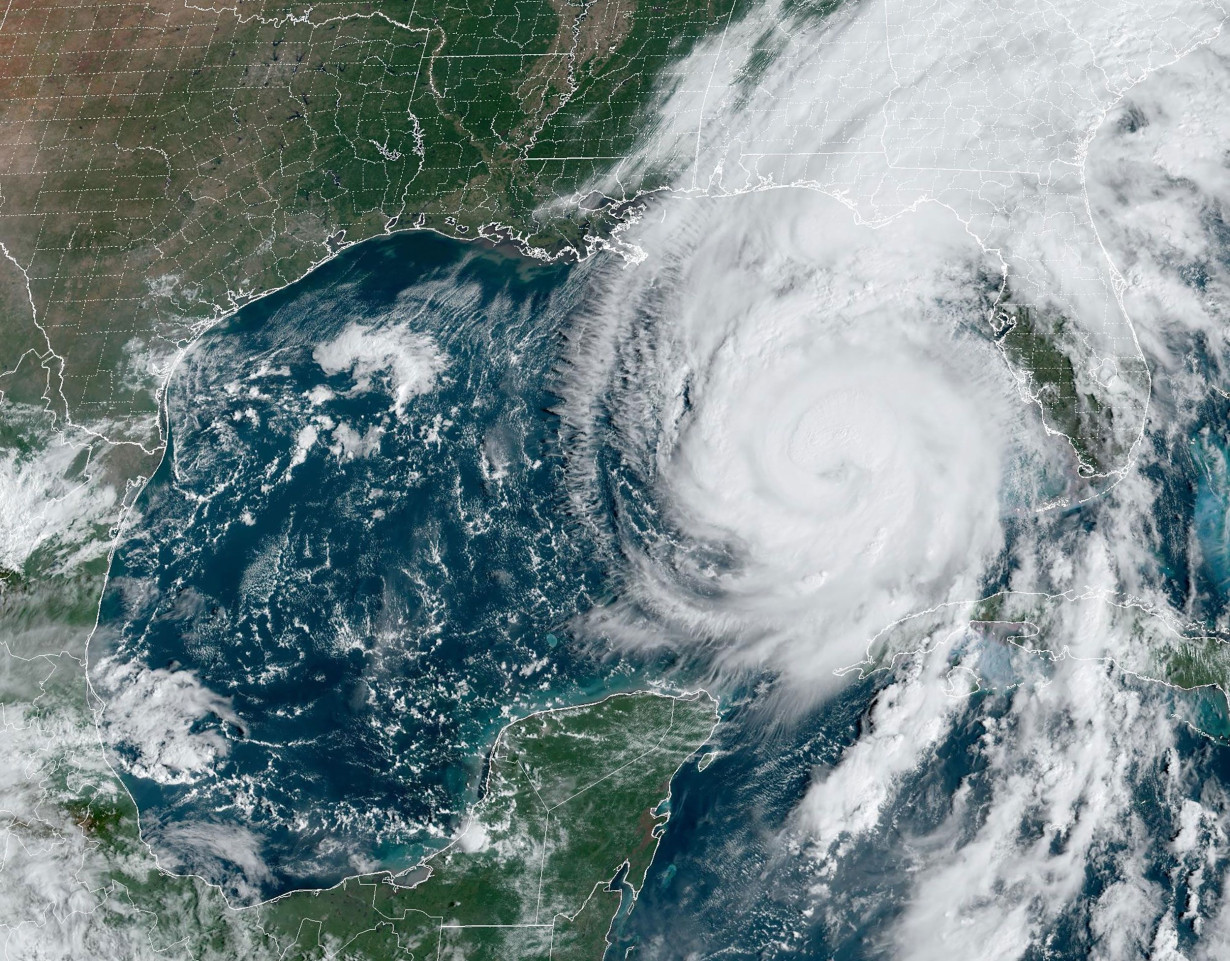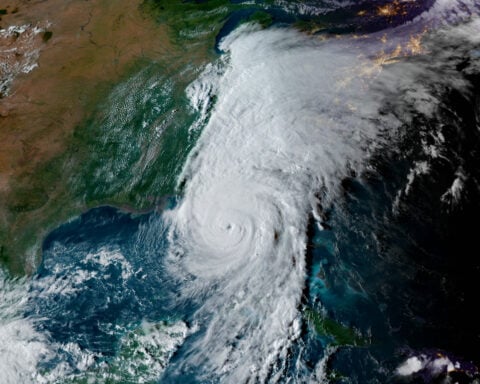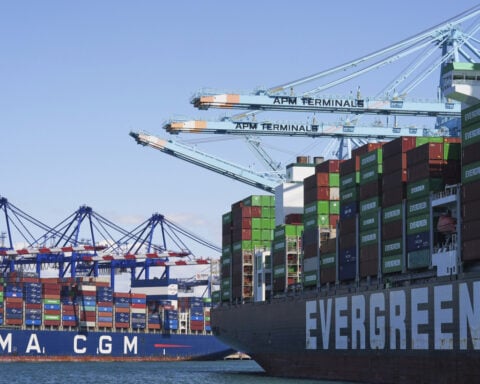(CNN) — It’s only spring, but some weather forecasters are already focusing on this year’s Atlantic hurricane season.
The season, which spans June through November, is shaping up to be a busy one, according to hurricane researchers at Colorado State University.
CSU’s team of experts is calling for an above-average hurricane season consisting of 17 named storms with sustained winds of at least 39 mph. They expect nine storms will become hurricanes and four will strengthen into major hurricanes — Category 3 or stronger.
This year’s outlook isn’t quite as bullish as last year’s spot-on prediction of 11 hurricanes, but it is significant. The forecast of nine hurricanes is tied for the second-highest amount predicted in the 30 years the team has issued long-range hurricane forecasts in April.
CSU has called for nine hurricanes in their longest-range report seven other times, most recently in 2022 and 2024, according to Phil Klotzbach, a senior research scientist at CSU and the lead author of the hurricane forecast.
The busy forecast signals that experts think atmospheric and oceanic factors will align to facilitate plenty of storm development months from now. But sometimes the atmosphere doesn’t play ball.
Historically, CSU’s first forecast of the year has the “lowest level of skill” because large changes can occur in the atmosphere or ocean between April and when hurricane season’s peak begins in August, the team caveated in a release.
“The CSU forecast is intended to provide a best estimate of activity in the Atlantic during the upcoming season — not an exact measure,” the team added.
CSU has about their typical level of confidence in 2025’s early forecast, compared to the above-average confidence they had in last year’s, according to Klotzbach.
“Last year, pretty much all forecast factors were pointing towards a hyperactive season, while this season, the climate signals are more of a mixed bag,” Klotzbach said.
The busy forecast hinges on a few factors
The “mixed bag” Klotzbach mentioned includes abnormally warm sea surface temperatures in the Atlantic Ocean and Caribbean Sea as well as the possible — but improbable — return of El Niño.
Warm oceans support stronger storms while El Niño’s influence has been shown to tamp down tropical activity in the Atlantic — though that wasn’t the case in 2023.
Currently, weak La Niña conditions are in effect in the tropical Pacific Ocean, according to the Climate Prediction Center. La Niña and El Niño are the cool and warm phase, respectively, of the El Niño Southern Oscillation (ENSO), a natural climate pattern driven by the interaction between the atmosphere and the ocean that influences weather worldwide.
Hurricane activity can be closely tied to what’s happening with ENSO, which is usually predictable well in advance.
For this hurricane season, ENSO is most likely going to be in its so-called neutral phase — neither El Niño nor La Niña. There’s an only about a 13% chance El Niño emerges during the peak of the season, mid-August through mid-October, according to the Climate Prediction Center.
So, without El Niño’s potential storm-suppressing influence, more storms are fair game.
But warm oceans are the biggest factor driving the CSU team’s above-average prediction this year. Parts of the Atlantic are still quite warm after hitting record-high temperatures during long stretches of 2023 and 2024. These areas will only get warmer as the hottest months of the year in the Northern Hemisphere approach, opening the door to storm formation.
“A warm Atlantic favors an above-average season, since a hurricane’s fuel source is warm ocean water,” CSU’s release explained. “Additionally, a warm Atlantic leads to lower atmospheric pressure and a more unstable atmosphere. Both conditions favor hurricane formation.”
Planet-warming fossil fuel pollution is tipping the scales toward hotter oceans that fuel dangerous storms. Scientists say unusually warm oceans will likely lead to more instances of storms rapidly intensifying, which nine of last year’s hurricanes did, including Hurricane Helene and Hurricane Milton.
In the most extreme cases of rapid intensification, which is when a storm’s wind speed increases considerably in a short period, a hurricane could be a Category 1 at one moment and explode into a Category 5 monster just 24 hours later.
That’s exactly what Milton did before it approached the United States in October. Rapid intensification remains a major forecasting challenge as underestimating its potential gives communities little time to prepare for a much larger threat.
A warmer atmosphere is also capable of soaking up more moisture like a sponge and wringing it out in the form of gushing rainfall, increasing flooding risks from tropical storms and hurricanes. Helene’s deadly flooding literally changed the landscape of western North Carolina forever.
Flooding from rainfall recently overtook storm surge as the deadliest aspect of tropical systems, according to a study from the National Hurricane Center.
The-CNN-Wire
™ & © 2025 Cable News Network, Inc., a Warner Bros. Discovery Company. All rights reserved.

 Trump has begun another trade war. Here's a timeline of how we got here
Trump has begun another trade war. Here's a timeline of how we got here
 Canada's leader laments lost friendship with US in town that sheltered stranded Americans after 9/11
Canada's leader laments lost friendship with US in town that sheltered stranded Americans after 9/11
 Chinese EV giant BYD's fourth-quarter profit leaps 73%
Chinese EV giant BYD's fourth-quarter profit leaps 73%
 You're an American in another land? Prepare to talk about the why and how of Trump 2.0
You're an American in another land? Prepare to talk about the why and how of Trump 2.0
 Chalk talk: Star power, top teams and No. 5 seeds headline the women's March Madness Sweet 16
Chalk talk: Star power, top teams and No. 5 seeds headline the women's March Madness Sweet 16
 Purdue returns to Sweet 16 with 76-62 win over McNeese in March Madness
Purdue returns to Sweet 16 with 76-62 win over McNeese in March Madness








